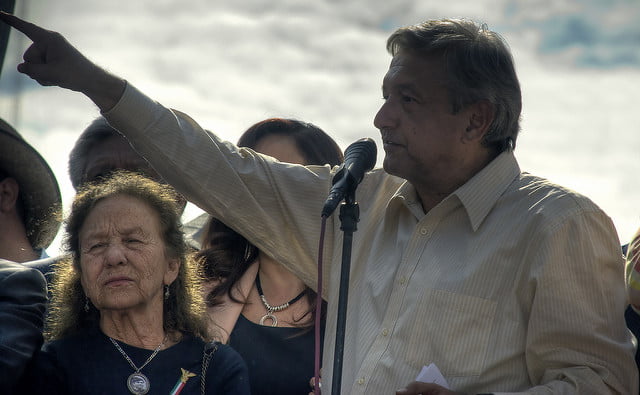Frida Kahlo: A Mexican Icon
In honor of el Día Internacional de la Mujer (International Women’s Day) earlier this month, I’d like to introduce one of the most famous and important women in Mexico’s history – Frida Kahlo. Her story is a fascinating one, so I’ll break it up into a few different parts. In this first post, I’ll go into detail about her early life.
Frida Kahlo’s Childhood
Magdalena Carmen Frida Kahlo Calderón was born on July 6, 1907 in the Coyoacán neighborhood of Mexico City. Frida fue la tercera hija del fotógrafo Guillermo Kahlo y de Matilde Calderón (Frida was the third daughter of photographer Guillermo Kahlo and Matilde Calderón).
The house where she was born is known as la Casa Azul (the Blue House) and it is now the Frida Kahlo Museum. Her father was German and her mother was mestiza (combination of European and indigenous American heritage). In addition to her two older sisters, she also had one younger sister and two half-sisters from her father’s first marriage.
Su vida estuvo marcada desde muy temprana edad por el sufrimiento físico y las enfermedades que padeció (Her life was marked from an early age by the physical suffering and diseases she suffered). She contracted polio when she was just six years old. She was bedridden for several months and it caused her right leg to be shorter and thinner than her left.
Because of her condition and all the medical treatments she had to undergo, Frida was not able to develop normally alongside other children. Her childhood loneliness became a theme in many of her paintings. For example, Cuatro Habitantes de la Ciudad de México (Four Inhabitants of Mexico City) includes a small girl looking abandoned and sad. For a good Spanish reading exercise, click here to learn more about this painting.
Frida’s relationship with her mother can be described as “amor y odio” (love and hate). She was much closer to her father, as he was the one who took care of her. He encouraged her to play sports as part of her rehab. Frida practicó diversos deportes, algunos poco usuales en la sociedad mexicana de su época para una niña, como fútbol y boxeo (Frida practiced various sports, some unusual in Mexican society of her time for a girl, such as soccer orandboxing).
Her father also taught her about photography, and she eventually began helping him retouch and develop photos. Frida began taking drawing lessons from Fernando Fernández, a friend of her father. She would eventually work for him as an engraving apprentice.
Learn about Frida Kahlo’s life and practice your Spanish listening with this video from Noticieros Televisa.
School Years
The exact details of her early schooling years are a bit unknown. It’s said that her father sent her to a German school, which she was expelled from for disobedience. En 1922 ingresó a la Escuela Nacional Preparatoria de Ciudad de México, prestigiosa institución educativa (In 1922 she entered the National Preparatory School of Mexico City, a prestigious educational institution).
Her admission to the school was a big deal, as she was one of only 35 female students out of a 2,000-person student body. The school promoted a new theory of indigenismo which sought to promote a new Mexican identity that shook off the idea that Europe was superior to indigenous cultures. She studied natural sciences in hopes of someday becoming a physician.
She formed a group called Los Cachuchas with some of her fellow students. Eran un grupo político crítico con la autoridad (They were a political group that was critical of authority). They were known for their rebellious attitude and tendency to pull pranks. The group took their name from the caps they wore in protest of the era’s rigid dress code. She fell in love with the leader of the group, Alejandro Gómez Arias, although her parents disapproved of their relationship.
A Horrible Accident
Frida’s life changed forever on September 17, 1925. She and her boyfriend got on the bus but then hopped off to find an umbrella she had left behind. They eventually got on another bus that was very crowded and moved to the back.
The bus driver attempted to pass an electric streetcar, which caused a horrific crash. Varios pasajeros murieron en el accidente (Several passengers died in the accident). Her boyfriend suffered some minor injuries, but Frida was much worse off.
Her spine was broken in three places and her right leg broken in eleven. Her right foot and left shoulder were dislocated and her collarbone was broken. She was impaled by the iron rail and suffered a fractured pelvic bone as well as a punctured abdomen and uterus. She would later describe it as “la forma en que una espada atraviesa a un toro” (the way a sword pierces a bull).
Frida had to spend a month in the hospital and then two months at home recovering from the tragic accident. She also had to wear a full-body cast as part of her treatment, which once again left her bed-ridden for several months. The accident effectively ended her hopes of becoming a doctor. It also caused pain and suffering for the rest of her life, prompting one friend to say that she “vivió muriendo” (lived dying).
While she was recovering from the accident, Frida began painting to kill the time. Her “Self Portrait in a Velvet Dress” from 1926 was one of her earliest works. You can read more about it here.
By the following year, she was back to socializing with her friends. Frida joined the Partido Comunista Mexicano (Mexican Communist Party) and became friends with activists like the Italian-American photographer Tina Modotti. It was at a party of hers that Frida was introduced to an artist by the name of Diego Rivera, but that’s a story for the next post…
Posteado en Spanish Articles (Facebook)





